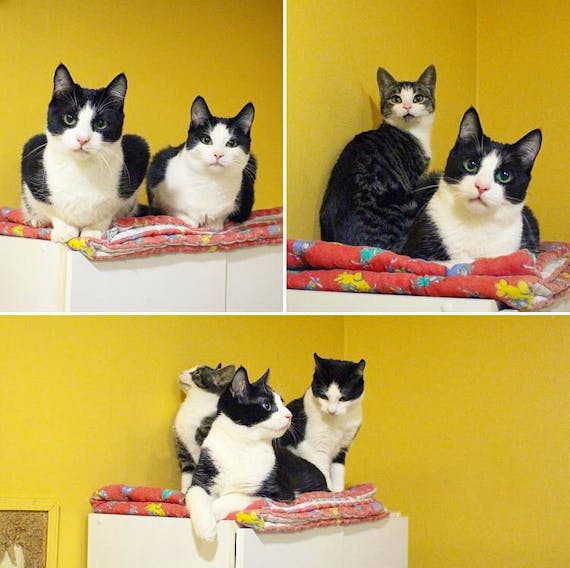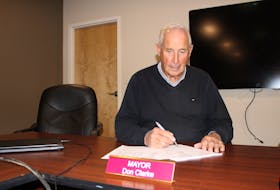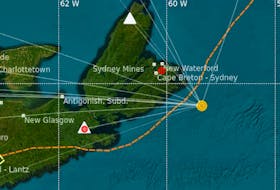ST. JOHN'S, N.L. — Now that at least 65 cats have been relocated from Little Bay Islands, rescue groups in the province are turning their attention to other cat colonies on the island – particularly, the plight of cats at dumps.
Jackson’s Arm resident Angela Wicks noticed a problem with a growing cat colony around the former White Bay dump near Pollards Point at the base of the Northern Peninsula about five years ago.
“It was heart-wrenching, to say the least,” she said.
Wicks said the number of dead cats she found at the former dump site that year was “astounding”.
And it’s not the only dump with cats.

On social media, rescue groups and concerned residents are talking about the Green Bay Waste site in South Brook, where people are posting photos of cats that appear in poor health.
At the White Bay dump five years ago, Wicks said she and a small group of animal lovers removed 89 kittens using what’s called trap, neuter, return (TNR) – a method of limiting the growth of cat colonies by ensuring they don’t procreate.
Wicks felt the cats needed more help, so she formed an informal, small group called White Bay Scaredy Cat Rescue.
She said within the past five years, the number of kittens at the dump has gone from 89 the first year, to 27 the second year, and this year – none.
She estimates there are fewer than 60 adult cats at the dump today. They stay warm thanks to a 16’ by 20’ shelter the group built a few years ago. The group also gives the cats deworming medications and food.
“If we can do it, anyone can do it,” said Wicks.
“We’re only just a small bunch of nobodies.”
Wicks said it was also done without any government assistance, though she has asked for it frequently. She said her emails to various government officials were responded with thank yous, but no offers to help the situation.
She said rescue groups around the province are now talking amongst themselves about what can be done to help cat colonies near dumps.
Partnerships key to helping cats
Linda Felix, president of Spay Day HRM Society – the Halifax-based charity that mobilized volunteers to rescue 42 of the Little Bay Islands cats – hopes the success of what was accomplished in Halifax can be a lesson to the rest of Atlantic Canada.
Felix said Halifax struggled for years with feral cats. She said about a decade ago it was estimated the city had over 100,000 feral cats.
“The city didn’t know how to take it on. It was unbelievable the amount of funding it would have required, and killing, and shelters, and they were in the same boat as everybody else.
“But by partnering, and putting all our heads together to figure out how it could be done more economically with groups who are interested – success.”

She said the simple act of partnering with other groups was what enabled Spay Day HRM to be of such assistance to the cats of Little Bay Islands. That’s because the cat population in Halifax is now small enough that they are able to help others.
“I’m hoping some of this will be an educational exercise for the rest of Atlantic Canada that TNR does work, and it is possible to humanely roll back your cat population.”
She said her message of partnership is especially aimed at the Newfoundland provincial government. She urges government to partner with groups who rescue feral cats.
“Newfoundland rescue groups are overwhelmed individually, but when you work together, you can accomplish greater goals… the government, the veterinarians, the rescue groups – get together and find a more humane method of dealing with your population.”
As for the Little Bay Islands cats, Felix said they’re doing very well. By Saturday, they will all be spayed or neutered, vaccinated, treated and tested. They’ll rest for a week or so before getting adopted either as indoor house pets, or through the Nova Scotia barn cat program.
She said she’s heard from many people with connections to Little Bay Islands who want to adopt one of the cats.
“So, some of them will somehow remain with their Little Bay Islands history.”
Felix said one group she hasn’t yet heard from is the Newfoundland government.
Prior to organizing the rescue effort, she wrote the province with her offer to help.
In an emailed statement to The Telegram, a spokesperson for Fisheries and Land Resources wrote that veterinarians with the Animal Health Division do not endorse the plan that was carried out by the rescue groups, “but will be monitoring and have asked organizers to keep us updated on progress.”
Want to join the conversation? Comments are open for this article at SaltWire.com
Twitter: @juanitamercer_
RELATED:
- Newfoundlanders, Nova Scotians working together to try to save Little Bay Islands cats, waiting on N.L. government reply on feral felines' fate
- Hello, kitties: Feral cats arrive in Halifax after rescue from Newfoundland island
- Then there were two: Newfoundland couple readies for life off the grid when rest of island community relocates
- Cat rescue at Little Bay Islands Facebook Group
- White Bay Scaredy Cat Rescue Facebook Group
- Little Bay Islands still in limbo
- 'That's my dream': White Bay women want somewhere safe for feral and abandoned cats









